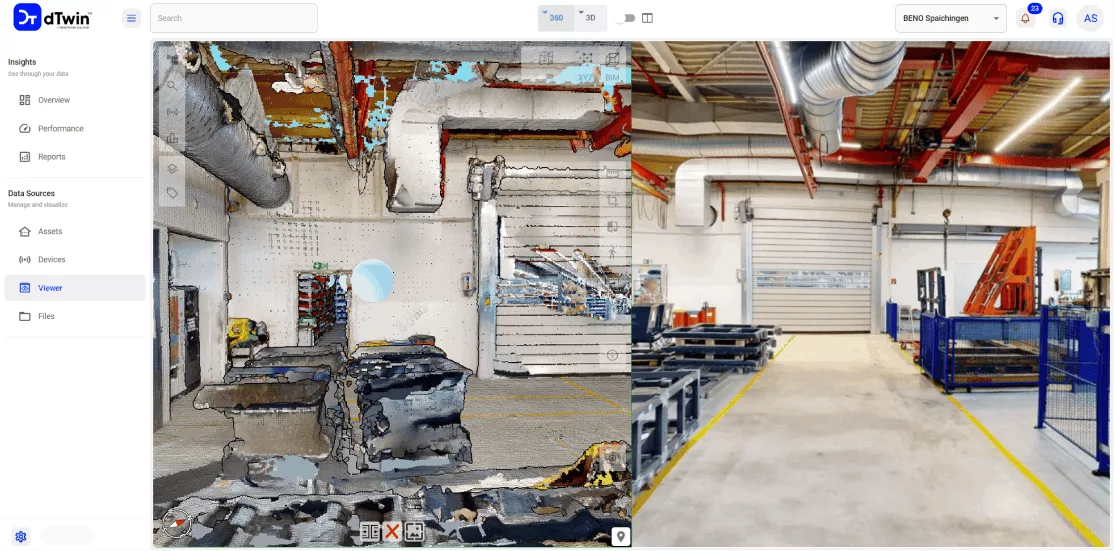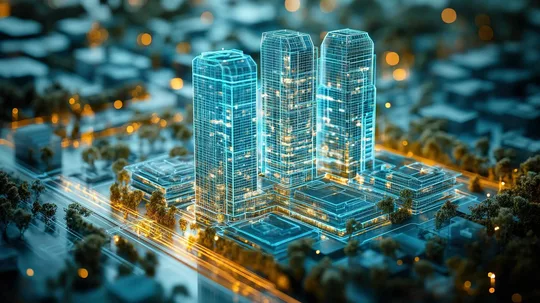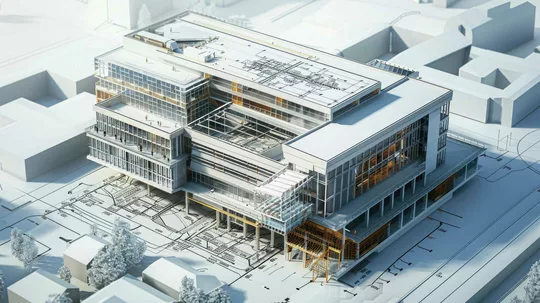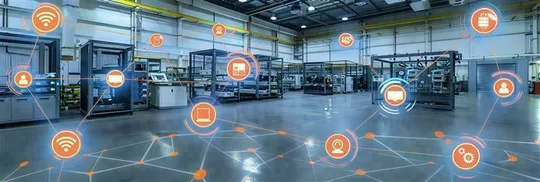
Bringing Efficiency and Sustainability to existing Buildings:
Why the BENO Group relies on Digital Twins
Property portfolio manager BENO is using Nemetschek dTwin to create digital twins of its existing buildings. Not only does this make property management much more efficient, but the company also saves time and money, while reducing its CO² emissions.
BENO Holding AG, based in Munich, is a listed property portfolio holder with a focus on operationally necessary properties. The company owns, manages and lets production, warehouse and logistics properties. Its portfolio currently includes properties across 13 different locations in Germany, most of which were built between the 1970s and the 2000s. The tenants are mainly medium-sized companies, but also industrial groups.
Widely distributed portfolio properties with an analogue data situation
Managing, maintaining and re-letting these properties, which are located all over Germany, presented BENO with a variety of challenges. These included the many on-site appointments, which were a particular thorn in the side of Michael Bussmann, CEO of the Beno Group, as he explains: “I am concerned about how much travelling is still being done to carry out simple inspections. This costs a lot of time and money, and ultimately it has an unnecessary impact on the environment.”
However, due to the age of the buildings, most of the plans, surveys and other data are usually only available in an analogue form and are often incomplete, which makes the site visits necessary. To combat this, Michael Bussmann and his team began to work with photogrammetry and laser scanning. This involves using drones and 3D laser scanners to generate point clouds from billions of measured points and thus create a precise digital image of a building. The data sets obtained were supplemented by high-resolution 360-degree panoramic images. Once the first objects from the BENO portfolio had been digitised in this way, Michael Bussmann set about looking for a solution that would enable him to extract the most value out of this data. His choice came down to dTwin from Nemetschek..


“We were impressed by how quickly and easily we were able to combine our existing and new data in dTwin to create a digital twin and reduce isolated solutions”
Quickly and easily create a full digital twin with dTwin
dTwin is Nemetschek Group's platform for visual analytics and connected intelligence for built assets. All visualisations of a building, such as the scanned 3D point clouds, and also BIM models or 360° panoramic photos, are merged here to form a digital twin. All of these visualization methods or just individual formats can be used. IoT sensors can be connected with the platform and provide real-time data on the performance of the building. CAFM, workplace management and building management systems can be seamlessly integrated.
All data is visualised in customized dashboards and reports or via heatmaps directly in the visualisation of the building. This makes optimisation potential and any problems immediately visible and enables better, data-driven decisions to be made, which, for example, ensure significant energy savings and more efficient maintenance.
After deploying the dTwin platform, BENO’s employees imported the previously scanned point clouds and images, and created BIM models of the properties on this basis, supplementing them with the new data. In addition, IoT sensors are gradually being set up in the scanned buildings and connected to dTwin. This means that BENO not only has access to exact digital images of the buildings, but also to real-time data on energy consumption, environmental conditions and capacity utilisation.
In the future, the company will therefore have real, complete digital twins of its properties. “We were impressed by how quickly and easily we were able to combine our existing and new data in dTwin to create a digital twin and reduce isolated solutions,” Michael Bussmann said. “We were particularly impressed by the comprehensive support and the close and prompt dialogue with the dTwin team.”
360° panoramic photos

Digital twins save time, money and CO² emissions
One of the first projects to be digitised this way, was the Light Industrial building in Spaichingen. Located in southern Germany between the Black Forest and Lake Constance the property comprises approximately 30,000 m² of usable space and is used mainly as a production property for a company in the field of ultrasound technology. Another property is in Dortmund, and it comprises about 16,500 square metres of usable space. The centrally-located, multi-tenant property is used for light industrial and logistics purposes.
Both buildings were scanned from the outside and inside. In some cases, sensors were installed to measure energy consumption, brightness and humidity. The time invested in deploying dTwin quickly paid off; whereas previously BENO employees had to regularly travel back and forth between the head office in Munich and the two properties - in order to carry out letting inspections, discuss upcoming construction work with service providers, draw up the necessary energy certificates and energy concepts or just to check some details - those tasks can now be done simply from the employees’ desk using the dTwin platform.
“If everyone involved uses dTwin consistently, we can significantly reduce our company's working hours, costs and CO2 emissions. We did the maths and were really amazed,” says Michael Bussmann with satisfaction. By eliminating the need to travel to on-site appointments for individual projects alone, an average of 288 working hours, more than 30,000 euros in travel costs and expenses, 28,800 kilometres of travel and CO² emissions of 5,760 kg could be saved each year.
CO² emissions of 5,760 kg could be saved each year

Savings of an average of 288 working hours, more than 30,000 euros in travel costs and expenses, 28,800 kilometres of travel
“It's not just important for us as owners and managers to see the building digitally, understand it better and make more informed decisions…”

Diverse perspectives: Future applications for dTwin
In the future, BENO plans to utilise dTwin even more extensively. For example, webcams are to be set up on the roofs of some buildings to add live images to the digital twin, which can be used, for example, to check whether the roof is full of leaves and whether there is a risk of clogged roof drains.
There are also plans to use the data and visualisations from dTwin in the future to offer in-house navigation for visitors to the buildings, guiding them through any sensitive areas in the production facilities so as to comply with all safety regulations. But BENO is not the only one to benefit from the advantages of a property's digital twin.
“It's not just important for us as owners and managers to see the building digitally, understand it better and make more informed decisions,” says Michael Bussmann. “We want our service providers and tenants to have access to dTwin and its benefits in the future, too.”


















